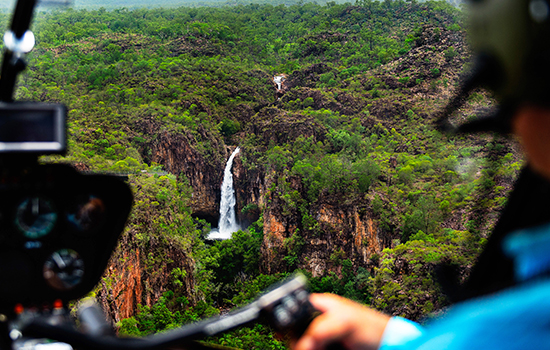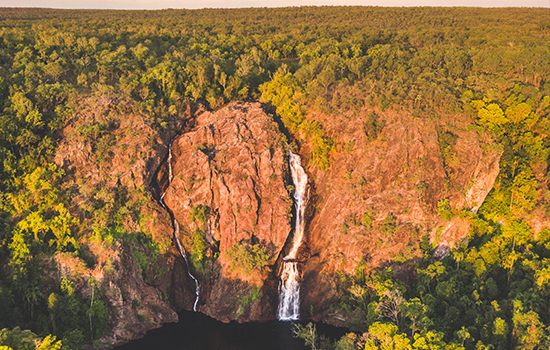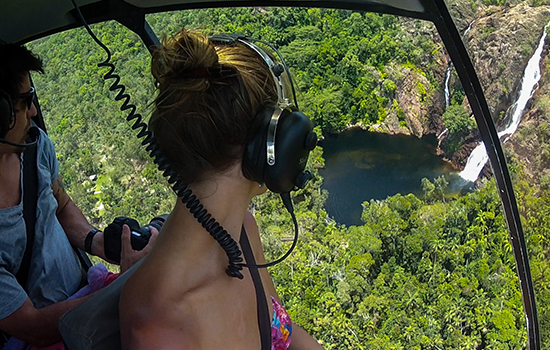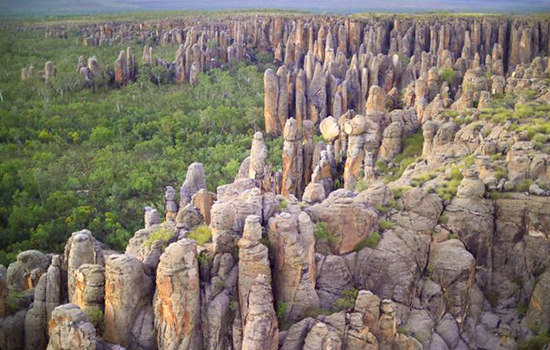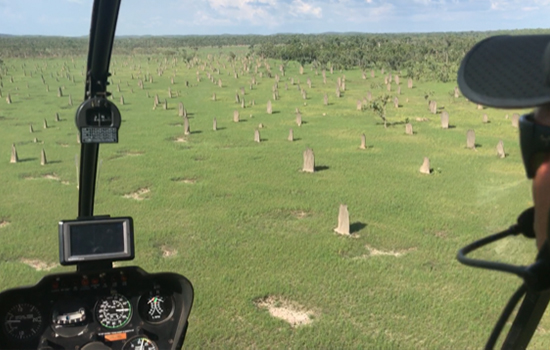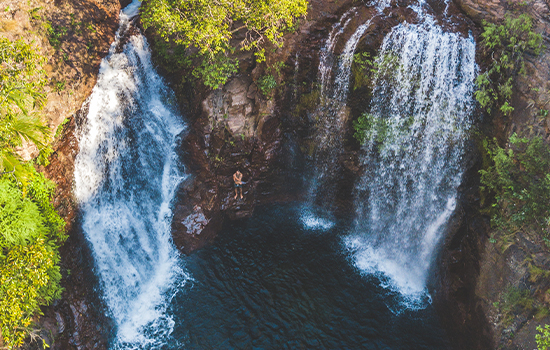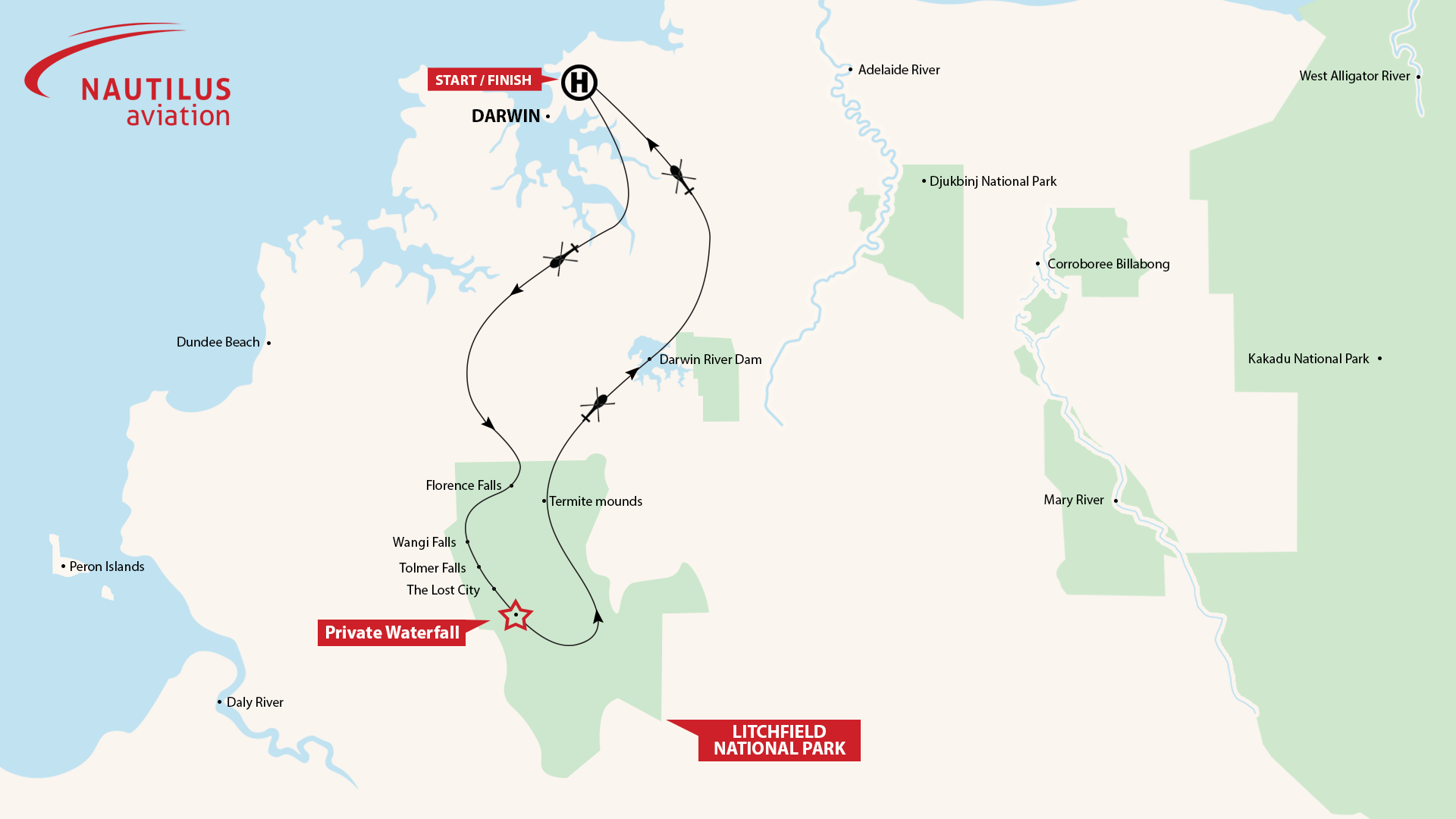Litchfield’s Waterfalls Scenic Flight
Contact us
E: [email protected]
P: 1800 88 FISH (3474)
Individual passenger names and accurate body weights are requested at time of booking
Click to view full terms and conditions of travel
Located just over 100km south west of Darwin, and covering an area of 1500km2, Litchfield National Park attracts over 260,000 visitors a year and is a must-see when visiting Australia’s Top End.
THE EXPERIENCE
In a comprehensive 90-minute scenic flight, discover all of Litchfield’s treasures including rugged sandstone escarpments, spring-fed streams, impressive waterfalls and iconic features such as The Lost City and fields of tombstone-like magnetic termite mounds.
Flying along the sandstone plateau of the Tabletop Range, a rich range of open woodland vegetation transitions into pockets of lush monsoonal vine forest. The porous sandstone substrate, over eons of exposure to the elements has weathered into striking formations which also absorb monsoonal rains that in turn feed numerous perennial streams.
Running off the plateau these shallow waterways form the stunning single and multi-drop waterfalls that Litchfield is famous for, cascading into crystal clear pools shaded by sheer cliffs and providing fantastic aerial photo opportunities in all seasons.
TOUR HIGHLIGHTS
- FLORENCE FALLS – fed by a perennial spring, water flows year-round dropping over two tiers and forming a characteristic twin fall filling a plunge pool set in a pocket of lush monsoon forest.
- WANGI FALLS – one of Litchfield’s better-known and more accessible falls, Wangi is a dual stream fall with the thicker segment being a two-tiered drop. Especially during the warmer, wetter months (October to March) the sheer volume of water over the falls makes for fantastic aerial photographs.
- TOLMER FALLS – the tallest of the falls you’ll see on the tour, Tolmer is a single drop of 101 metres into an inaccessible pool surrounded by sheer cliffs. Lit up best by the midday sun, this generally cool and shady oasis is home to colonies of rare orange horseshoe bats and vulnerable ghost bats.
- THE LOST CITY – believed to date back more than 500 million years! On first impressions this complex, freestanding arrangement of weathered sandstone towers, narrow passages and domes appear like the remains of an ancient civilisation. Spread over an area the of size of a small town, the original sandstone escarpments have succumbed to a lifetime of erosion from wind and rain creating shapes and structures only Mother Nature could sculpt. This area is normally only accessible to those with a 4WD willing to brave 10km of rough and rocky single-track, regularly impassable in the wet season. Witnessing The Lost City by helicopter is not only practical but provides an unmatched perspective available all year round.
- TERMITE MOUNDS – as our Litchfield experience nears the end, we marvel at the work of armies of termites which have created an extensive field of giant tombstone-like mounds. Reaching 2 metres (6ft 7”) in height, the magnetic termite mounds are built with their thin edges facing north-south and the wider side East-West. This ingenious design aids in thermoregulation for termites who prefer stable temperatures combined with high humidity. The larger mounds, referred to as cathedral mounds can reach an incredible 4 metres in height.
- DARWIN RIVER DAM – on the way back to base your pilot will also point out the city’s main water supply with a holding capacity half that of Sydney Harbour.
HISTORY
In addition to its many natural highlights the park also holds important cultural and historical value. The land within the borders of Litchfield National Park has cultural significance to the Werat, Warray, Koongurrukun and Marranuggu Aboriginal people.
The park was originally named after Frederick Henry Litchfield, a member of the Finnis Expedition, who provided the first European connection to the area back in 1864. Until 1955 the area was mined in part for copper and tin followed by pastoral activity before being proclaimed a National Park in 1986.
THE HELICOPTER DIFFERENCE
Compared to fixed wing aircraft, our helicopters have enhanced manoeuverability and are fitted with oversized viewing windows creating a premium scenic flight experience. Your pilot can easily adjust speed, altitude and direction of travel in response to wildlife sightings or other points of interest while ensuring passengers on both sides of the aircraft receive equal chance to capture that perfect photo opportunity.
All guests are supplied with headsets fitted with voice-activated microphones to enjoy the live inflight commentary and allow conversation directly with your pilot and other passengers.
WHAT TO BRING
Camera, sun smart clothing including hat, sunglasses and sunscreen (SPF 50+ recommended)
ALSO AVAILABLE
Please note: actual flight path may differ on the day due to adverse weather conditions and/or air traffic control.

